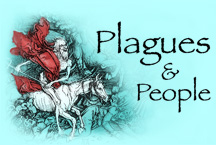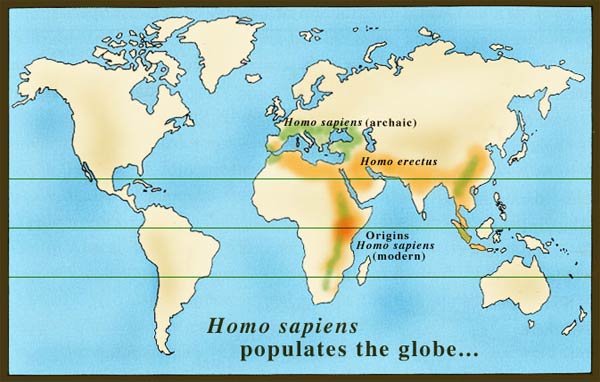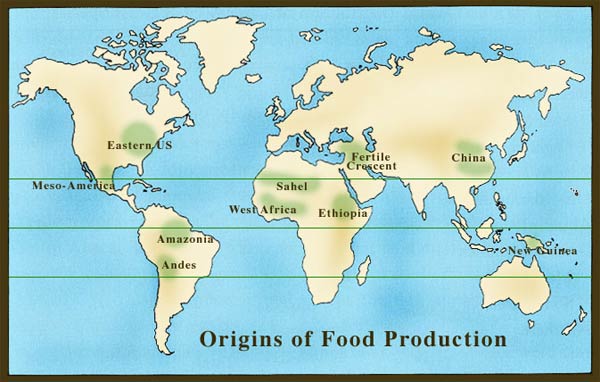
Infectious and Epidemic Disease in History
Department of History
University of California, Irvine
Instructor: Dr. Barbara J. Becker

Department of History
University of California, Irvine
Instructor: Dr. Barbara J. Becker


Earliest Homo sapiens modern (120,000 BP [Before the Present]) based on fossil evidence.
________________

Geographical distribution and technical capabilities of genus Homo from 100 million years ago to the present.
________________

Human migration around the globe through 1000 BP.
________________

Evidence of agriculture found in the Fertile Crescent (10,500 BP), in China (9,500 BP) and in the Americas (5,500 BP).
________________
Most of wild land biomass is:
Domesticating animals introduces readily available source of protein, food product variety, non-food products, natural fertilizer, and work power. |
|||||||||||||||||
Plant Domestication
artificial selection overrides natural selection Opportunism--first hominids
Preference--first hominids
Husbandry--before 10,000 years BP
Cultivation--after 10,000 years BP
Wild (left) and domesticated (right) wheat grains.
Changes in maize cobs resulting from 6,000 years of domestication. |
|||||||||||||||||
|
Animal Domestication Characteristics of wild animals suitable for domestication:
Early Domesticated Animals (years BP)
Domesticated cattle in Egypt, 3500 BP. |
|||||||||||||||||
Crowd Diseases Domestication of animals brought humans in close contact with crowd diseases of herding animals:
Settlement resulted in increased population numbers and density:
Settlement increased exposure to microbes via:
|
|||||||||||||||||
Nature selects life forms most effective at producing offspring that survive to reproduce. How did microbes evolve such that by thriving, they destroy their own and their progeny's principal food source? |
 |
| Go to: |
|
|